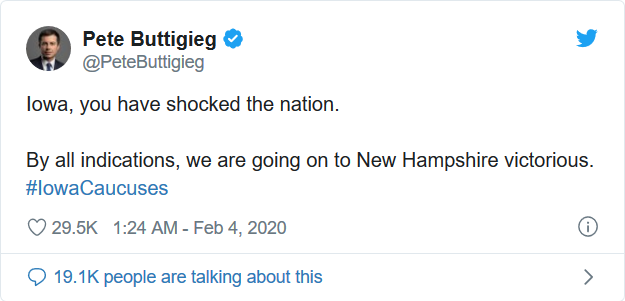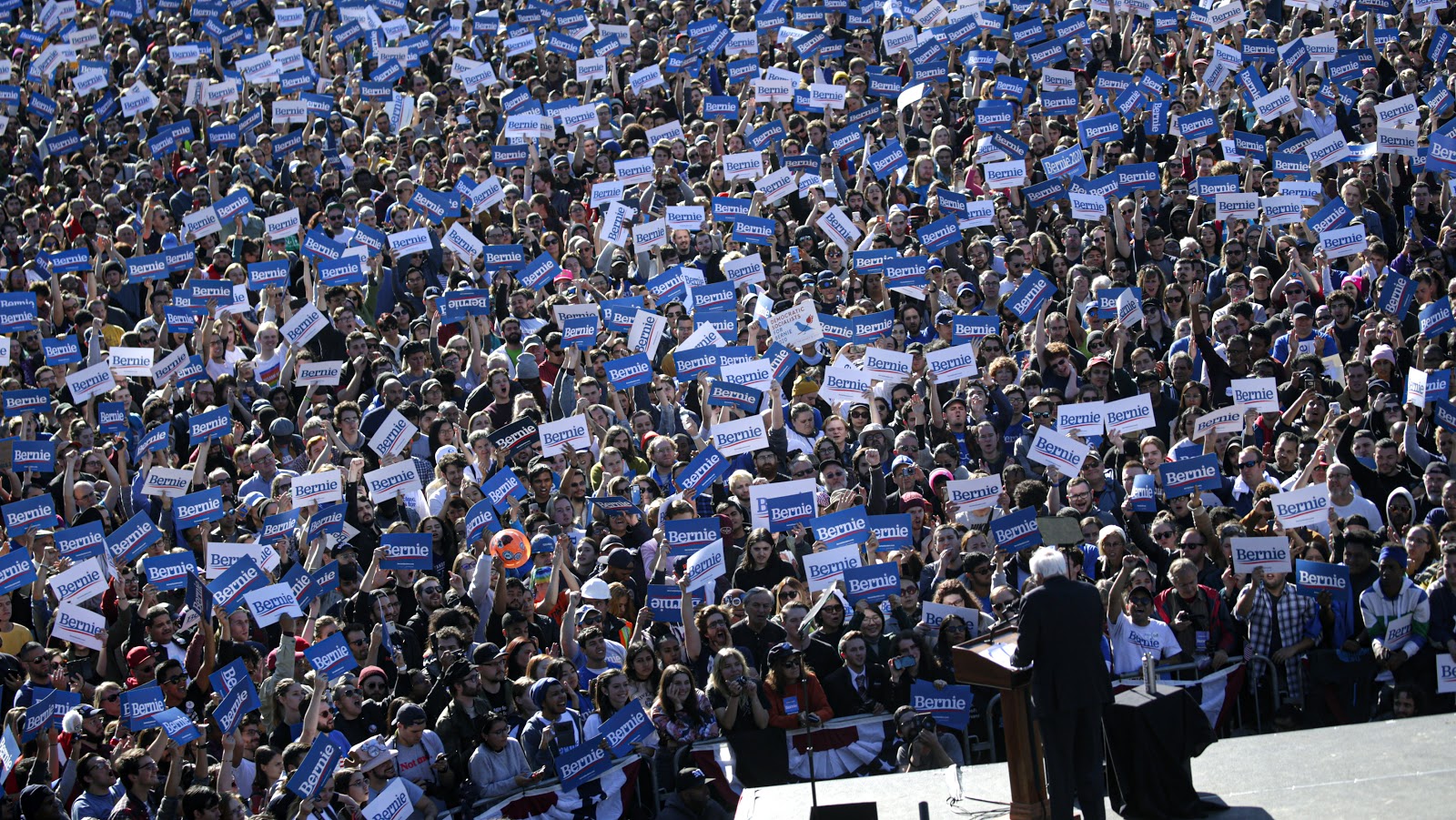Very few media outlets have covered the question of voter suppression in the 2020 Democratic Primary, and it’s understandable why they choose to avoid it. It’s a tenuous subject that is prone to attacks from all camps. The United States of America relies on its identity as a democratic country, and calling said identity into question is not only uncomfortable for voters, but shakes the foundation of all decision-making, both federally and globally. When a citizen casts a vote, the assumption is that their vote counts like all the others, and that this is—as is specified in the actual definition of “democracy”—a government in which the supreme power is vested in the people and exercised directly by them or by their elected agents under a free electoral system. And yet, there are too many signs of malfaisance that have swiftly formed into a pattern. After two months of primaries, it has become irresponsible not to start this discussion. That said, it is equally irresponsible to outright claim that the contest is rigged. The fact of the matter is that, because the Democratic National Committee is a private institution, we will likely never have enough data to substantiate the claim that either the 2020 race has been rigged from the start. It’s a step too far, and does not appropriately credit the propaganda-driven establishment outposts known as CNN and MSNBC that have shaped the Trump narrative for almost 4 years. That narrative has brought this question of “electability,” which, oddly enough, has had little connection to favorability (a contest that Senator Bernie Sanders has been winning). Between the Iowa caucus and Mini Tuesday (also known as Super Tuesday 2), CNN negatively covered Sanders 3.26 times more than former Vice President Joe Biden. In a similar vein, MSNBC’s 24-hour cycle laid the groundwork for a Democratic candidate like Biden: one who perfectly embodies the antidote to Trump’s lack of civility. This narrative, as The Hill’s Krystal Ball puts it, claims that “American rot begins and ends with the person of Donald Trump […] so if we just get rid of the villain, good times will return, right?” Since Biden does not stand for anything concrete other than a return to the days before Trump, the corporatist-civility-candidacy of Joe Biden presents the perfect unity between Hillary Democrats and Never-Trumpers. And after the consolidation of the Democratic Primary race merely 48 hours ahead of the Super Tuesday, the DNC made it clear which candidate they would need as their nominee so that “nothing would fundamentally change.”
There will be no need for tinfoil hats; what we will look at is the pattern of attempts to suppress votes over the last 2 months. Why? Because this is supposed to be a democratic contest. Because this suppression is disproportionately affecting young voters, low-income voters, and voters of color. And because suppressing these demographics hurts one candidate in particular.
Iowa
Those who followed the Iowa Caucus will remember the Iowa Democratic Party’s disastrous mobile app that produced inaccurate electoral results. Developed by a for-profit tech firm (aptly) named Shadow, Inc., the app’s voting data matched neither the Iowa polls nor the Sanders campaign’s internal data from that night. To those who supported the Sanders campaign in 2016, the inaccuracy was foreboding. Equally concerning was that with 0% of the results having been reported, then-Democratic candidate Pete Buttigieg had already claimed a victory for his campaign:

As more news trickled in, we learned that not only was the app run by veterans of Hillary Clinton’s presidential campaign, but also that seven different Democratic or advocacy campaigns contributed $153,768 to the tech firm last year. Among the contributors were Joe Biden and, notably, Pete Buttigieg, whose campaign made a $42,500 contribution to the app. The Buttigieg campaign claimed that it had supposedly made the contribution to use the app’s text messaging tool. Since her loss in 2016, Hillary Clinton has been incredibly vocal about her disdain for Bernie Sanders; her campaign’s connection to the app, which was reported to be inadequately tested, is definitely suspicious. Though chaotic, this incident alone was not enough to make the case that the Democratic Party was distorting election results. Sheer incompetence is the simpler answer. Regardless, we can accurately affirm that the Shadow, Inc. app developers were firmly entrenched in the Democratic establishment, and that itself raises some red flags. To its credit, however, the Sanders campaign seemed prepared for this disaster in that it had developed its own app that would allow Precinct Captains to track down the votes in case the official results proved to be inaccurate.
“When you do turn out, you should not be waiting three, four, seven hours in order to vote.”
-Congresswoman Alexandria Ocasio-Cortez
Texas
In the late hours of Super Tuesday, exit polls ostensibly showed that Biden and Sanders were neck and neck, each with 34% of the vote. But when the votes were finally counted, Sanders dropped down to 30%, which exceeded the 2.9% exit poll margin of error. Just as in the Iowa caucus, the irregularity in the electoral process worked significantly against Sanders, whereas the discrepancies of data for other candidates remained well below the 2.9% threshold. After a week of pro-Biden media narratives, a Dallas County Elections Administrator reported that her county office failed to count 44 thumb drives of voting data, which made up roughly 10% of the votes in polling location sites in Dallas, Garland, Grand Prairie, Irving, Mesquite and Rowlett. Yet again, the argument that introducing new technology into the voting process backfired remains valid. And yet, these mistakes seem to affect Sanders more than the other Democratic candidates. What’s more, voter suppression in Black and Latino neighborhoods was rampant. From the 3-7-hour lineups to vote to the actual closing of stations in areas with traditionally higher turnout from minorities, poor people, and young people, it’s clear whose voices matter most to the DNC.
Massachusetts
Just as in Texas, election results from the digital vote counts deviated significantly from the exit poll results conducted by Edison Research. The difference in Massachusetts is that Sanders is not the only candidate to have had an abnormal discrepancy in results. Both he and Elizabeth Warren suffered a 3.8 and 3.7 difference respectively. Moreover, the exit polls showed that Biden had garnered 28.9% of the vote, but after counting, Biden’s results had jumped 4.7% to a total of 33.5%. These differences represent a phenomenal swing of 8.4% between Biden and both Sanders and Warren. Since exit polls are widely recognized to act as a safety measure for checking the validity of vote counts, these discrepancies are concerning.
Vermont
The Vermont primary is a slightly different case, as the discrepancies between exit polls and electoral results did not disproportionately affect the winner of the race. It is a case worth noting, though, both because these discrepancies are higher than in other the primaries and because the results in Vermont demonstrate yet again how easy it is to commit fraud with digital voting. According to exit polls, Sanders had a firm command of 57% of the vote in his home state, while Biden had 17%. Biden was never going to win in Vermont, but he was however quite close to being below the 15% threshold and therefore at risk of receiving zero delegates from the state. The reported vote count, by contrast, showed Sanders to have fallen by 6.3% to a nonetheless commanding lead of 50.7% and Biden to have risen 4.5% to a safe 22% of the votes. What makes this primary striking is that the combined discrepancies total out to 10.8%, which represents a massive swing for Joe Biden.
California
Similar to the Vermont primary, the discrepancy between exit polls and electoral results showed that Sanders’ commanding lead diminished, which allowed Biden to pick up more delegates than was predicted. For Sanders, the discrepancy was a loss of 4.2%. For Biden, it was a gain of 3.5%. According to analyst Theodore de Macedo Soares, the reason for these discrepancies may be because of the sheer volume of mail-in ballots. As the Secretary of State’s website notes, “[i]n processing vote-by-mail ballots [and provisional ballots], elections officials must confirm each voter’s registration status, verify each voter’s signature on the vote-by-mail envelope, and ensure each person did not vote elsewhere in the same election before the ballot can be counted.” Due to the finickiness of this process, any slight errors could potentially mean that hundreds of thousands of ballots were not counted. Alone, the errors demonstrate how stark flaws of the voting process. Combined with the other strange incidents in the Democratic primary, they contribute to a broader trend of undemocratic activity.
Exclusive: AOC blames Bernie’s lackluster performance on voter suppression
Michigan
While it’s clear that the increase in youth voting for which the Sanders campaign had hoped has not in fact materialized, it’s crucial to remark upon the difference in wait-times between polling stations in middle class suburban areas and polling stations on campuses. Just as in Texas, student polling stations in Michigan have consistently been too small and too understaffed to handle the high volume of students lining up to vote. In a state in which thousands more young people are attending Bernie Sanders’ rallies in 2020 than in 2016, the youth vote should have increased rather than have mostly stayed the same. But it’s clear that although the youth turnout has been higher, even if the number recorded votes has not changed. The stagnation is unsurprising when considering how many young people wanted to vote, but could not due to the long lineups. The generational divide in the Democratic primary race has increasingly become evident: in Michigan, Sanders has 76% of support from voters aged 18 to 29 and 52% of support from voters aged between 30 to 44. If the DNC wants Biden to be their nominee, then it makes perfect sense that they would suppress the votes of young people.

All of the “errors” we have seen in the last few months have benefited either Biden or Buttigieg. In the end, however, no good will come from speculation unless we can substantiate it with proper evidence. For one, the data available merely suggests that what could be happening constitutes electoral fraud, but it is highly unlikely that the Democratic parties, statewide and national, will release the data necessary to make such a claim with certainty. That being said, we all need to be critically vigilant. What we also know is that voter suppression is happening in low-income areas and that Sanders’ exit poll results and electoral results do not match by significant margins. There is a clear pattern of inconsistencies between exit polls and electoral results that have routinely undermined Bernie Sanders. Voter suppression may even be worse during the general election if we do not address this issue. A separate, independent institution should be put in charge of the electoral process, because it’s possible—probable, even—that the DNC is operating within the law in its attempt to block Bernie Sanders from winning the nomination. But that should be all the more concerning for anyone who presupposes that each voter matters and that each vote is weighted equally.
*In the interest of article length,the state primaries of New Hampshire, South Carolina, and California were not discussed. Though suspicious discrepancies did occur in these races, none of them grossly affected the ranking of the candidates





